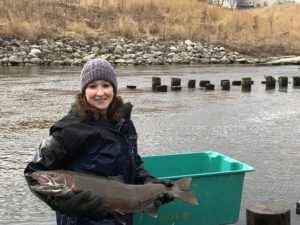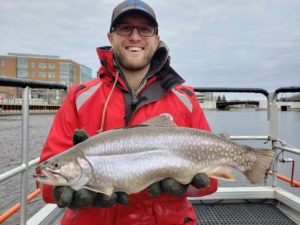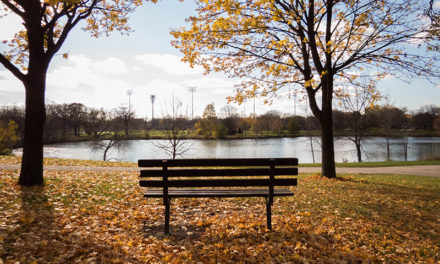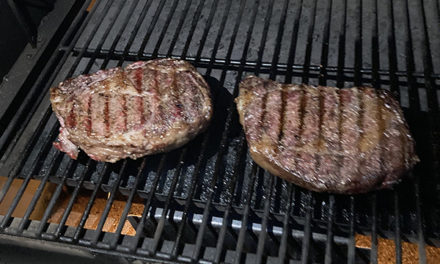By Marty Lamers
As the weather warms back up again (finally!), many of us are looking to get back outside as much as possible. Is there any better way to enjoy everything that the Wisconsin landscape offers than by fishing?
With surging rivers and calmly rippled ponds, or even out on one of the big great lakes, Wisconsin is blessed with many different accessible waterways. Happily, many of them are rich with fish to catch.
From the novice through the expert, fishing provides a great way to have fun in natural settings. While it is a skill that can be honed and developed into a fine art, the simplest line with a hook and worm could be all you need to connect to a big one. Any- and every-one can do it!
Taking your kids fishing often creates a special memory and a legacy that can last a lifetime. I know I personally treasure the times I spent fishing with my father and have since had the same experiences with my own son. I have annual fishing trips now, and fishing buddies and family that bond instantly when it is time to get out on the water and go get ‘em.
Fishing is, and always has been a big part of my life – and I learned to love it growing up right here in Wauwatosa!
What’s Out There
Wisconsin is home to more than 160 different kinds of fish. Targeting different fish species is certainly something you can do around here, and you can be rewarded handsomely.
- The annual steelhead runs in the Spring can produce whoppers in rivers connected to Lake Michigan. You can even catch them right in the Village of Wauwatosa now! Taking advantage of their presence here is an enriching pursuit of happiness for local fisherfolk.
- Lake trout are a treat and can be found in multiple spots across the state, and the brown trout out of area lakes can get seriously huge. Brook trout also get large and are common in local waters too (thanks to DNR stocking programs!). Plus, there are many lakes and ponds stocked annually with rainbow trout for increasing your ample angling adventures.
- Smallmouth bass are feisty fighters and will be found in many rivers and lakes locally. Largemouth bass, bluegill (bream), yellow perch, pumpkinseeds, black and white crappies, huge catfish, walleye…the list seems endless. Better still, most of these fish are quite delicious too!
If targeting a specific species, you will want to get to know the fish’s habits and eating tendencies. Learn a little about their seasonal activity and potentially their migratory patterns. You will want to have an idea of which baits and lures will probably work best, as well as when, and where (specifically) to find the hottest action.
Where To Go
It is very easy now to find a place in Tosa (or nearby) to get a line wet, and hook right into the action. This is different than when I was a kid in the 70s, and it just keeps getting better!
“Both the Menomonee and the Milwaukee rivers offer ample opportunities to catch large fish!” emphatically states Laura Schmidt, a fisheries biologist with Wisconsin’s DNR. She also heads the department’s urban fishing program.
“We are actively monitoring fish populations of the Menomonee River and as of last summer, also tracking movement in the Milwaukee River. We have tagged multiple species moving upstream, including smallmouth bass, steelhead, and lake sturgeon,” she states. Ms. Schmidt notes ongoing work as part of the Milwaukee Estuary AOC to continue fish passage work on these rivers and in restoring fish habitat.
Asked about targeting specific species that might be running up these rivers, Ms. Schmidt said: “Steelhead run in the spring and Chinook and coho salmon in the fall, but the Milwaukee River does offer some great opportunities all summer. There is a healthy population of smallmouth bass in the river, and we’ve surveyed multiple that were 17-18 inches. We’ve also seen flathead and channel catfish, which are always family favorites to catch.”
Spots to Try
When I was growing up in Wauwatosa, there weren’t really that many places to fish nearby (to me). I longed to cast for trout in the Menomonee River, yet it was too shallow to hold decent fish back then. But thanks to ongoing work by the DNR, EPA, and the Army Corps, this is not the case any longer.
Between 2000 and 2016, the Milwaukee Metropolitan Sewerage District completed 3 projects totaling 1.5 km of concrete channel removal and river naturalization on the Menomonee River. Those projects were funded through the EPA and the Army Corps, and part of the effort called for an assessment of how successful the concrete removal was in improving fish passage.
Ms. Schmidt assured me her team has noted healthy and increasing populations of fish taking advantage of this new habitat. She also said that the DNR is stocking brook trout – 50,000 each year – in tributaries tied to Lake Michigan as part of an initiative to provide more opportunities for nearshore fishing. That means more than 150,000 fish were already successfully stocked by 2022!
“These brook trout have been doing very well in Milwaukee, finding plenty of forage and growing fast,” she states. “Many of them have been caught by anglers on multiple stretches of the Milwaukee River, but at least one was caught in Underwood Creek as well.” [Staz – there is an image to complement this]
Urban Fishing Program
Ms. Schmidt leads the DNR’s urban fishing program, which is a great way to get out there and find some fun angling action nearby.
“The urban fishing program provides angling opportunities in urban areas. The program also increases awareness among urban residents of angling techniques, ethics, and environmental conditions necessary to produce desirable fisheries. There are currently 21 ponds in Milwaukee County designated as urban waters by the DNR and the County Parks department,” she said.
I asked if there were many decent fish to be caught in these ponds. “The Wisconsin DNR stocks catchable-size rainbow trout into all urban fishing ponds every spring,” she assured me. “The numbers of fish stocked varies by pond size, but they are all stocked. In Milwaukee County, the Hunger Task Force Fish Hatchery also stocks yellow perch, rainbow trout, and hybrid bluegills into urban ponds to provide additional opportunities for catching fish.”
“All designated urban fishing ponds have special fishing regulations,” she continued. “There is a special season that runs from the 2nd Saturday in March through the last Friday in April every year when only kids aged 15 and under and disabled anglers are allowed to fish. Except for that special season, fishing in urban ponds is open year-round to everyone.”
Always on the lookout for a delicious meal, I wondered if you could keep the fish you catch out of these urban waters, and what kind of limits there might be. “There is no minimum length limit for keeping fish, with a daily bag limit of 3 trout, one gamefish, and 10 panfish,” Ms. Schmidt told me. “You can absolutely keep the fish you catch, and we encourage it.”
“Those rainbow trout are stocked at the end of March as a put-and-take fishery. By July, the water temperature in most of these ponds becomes too warm for rainbow trout to survive, so we encourage that they are fished for and kept,” she said. “The yellow perch and bluegills can certainly survive throughout the summer, and they do, but they are also stocked for people to catch and enjoy.”
I asked where the closet, and best ponds were for Tosa residents: “The closest urban fishing spot to Wauwatosa is Washington Park,” she said. “This location is great for kids and families, especially with the Urban Ecology Center right there. The Urban Ecology Center does have loaner rods and tackle for kids and families to use, and there is also a fishing pier. We’ve sampled yellow perch and bluegills along with the stocked rainbow trout here. There is also a healthy population of bullheads in that pond, and they are typically easy to catch which kids always enjoy.”
“Scout Lake in Greendale is another wonderful urban fishing pond,” offered Ms. Schmidt. “There is a fishing pier along with a walking path along the lake. Scout Lake is one of the deepest urban fishing ponds in Milwaukee County, with a maximum depth of 19 feet. This means it is one of the few ponds that rainbow trout can survive in longer, and we also see small naturally reproducing populations of panfish. I’ve even heard rumors of northern pike being caught in this lake, though I have yet to see one myself.”
Wisconsin’s DNR also provides a wonderful document of 50 places to fish within 60 minutes of downtown Milwaukee – this is a free, downloadable resource to help you find dozens of great and convenient places to cast: https://dnr.wisconsin.gov/sites/default/files/topic/Fishing/LM_closetohome_letter.pdf
Gearing Up
The Cane pole – it doesn’t get any easier than this…tie a line to a pole and put a hook on it. Great in ponds and lakes for bluegill, crappie and little panfish that will keep the kids happy. No reels to angle, no muss no fuss.
The Closed Bail Reel – Named because the reel is enclosed, you operate this reel with the push of a button. Popular models include the Zebco 404 or 202, which is often a first reel combo for many young anglers. I personally had a Zebco 404, and it was the first one my son had as well!
The Open Bail Reel – Usually a reel that you graduate to from the closed bail, the open bail reel is common for all types of fishing. The gear ratio and drag settings can make one reel better than another, and you can find a range of them from under $10 to well over $500, depending on what you need.
The Fly Rod – One of the more popular, yet challenging ways to fish, many who get to fly fishing never go back to any other kind. Indeed, the skill levels and equipment specifics get much more finite and detailed in fly fishing, because it is one of the most effective ways to go after Wisconsin’s trophy trout and salmon. Many times, these fish will be spooked by other fishing efforts and will only hit flies. Fly fishing in Wisconsin waters is second to none and produces truly beautiful fish of multiple species.
How long should my fishing pole be? Poles usually range from about 6 to 12 feet, though there are shorter and longer ones too. Shorter ones are great for tight situations, or places where you need more control and accuracy in your casts. The longer poles (7 feet and above) give you more leverage to really hurl a lure or power out a big fish, and work really well when space and accuracy are not a big concern. Longer poles are usually stronger than smaller ones. Micro rods and Ultra-Lights are small scale rods and can provide smart ways to fish tight, bendy, rivers. Lighter, smaller setups can make every fight one that feels truly legendary!
The Loaner Program: The DNR has a wonderful fishing gear loaner program, allowing you to get all you need to enjoy a day of fishing, for FREE. There is a loaner rod trailer stationed with DNR Fisheries in Milwaukee. “Our office is located at the UW-Milwaukee School of Freshwater Sciences in Milwaukee,” said Ms. Schmidt, “and also stationed there is our loaner rod trailer with rods, reels, life vests, bobbers, hooks, and other tackle available for anyone to borrow free of charge. I am the contact for the loaner rod program in Milwaukee. Our loaner tackle includes some wax worms which are very popular for catching rainbow trout on the urban ponds, although,” she added with a smile, “the secret is usually corn.”



Great Baits
There are two basic ways to fish with a rod and reel or cane pole – with a lure or using bait. Bait can be alive like a minnow or a nightcrawler, or it can be “dead” like a spawn sack, corn, bread balls, or some artificial trout baits. While some baits have a sort of universal appeal to all fish, you can use the right baits to really zero-in on the fish you want to catch:
- Worms: red wigglers, nightcrawlers, wax or meal worms…there is something about these live baits that drive fish crazy. Leeches also work very well in Wisconsin waters. Worms attract most species, and you might catch a trout, bluegill, catfish, crappie, salmon, perch, or almost anything swimming along!
- Minnows: Live minnows make an excellent bait for most fish, but especially for aggressive game fish like bass, trout, walleye, and crappie. There are different types and sizes you’ll find at local bait stores, but fathead minnows, also called “crappie minnows” are inexpensive and an excellent size for hooking into a variety of different fish. Crayfish, and bits of them are also excellent baits – particularly for hungry smallmouth bass.
- Insects: Grasshoppers, crickets, and their larvae can make excellent bait to use for panfish like bluegill, crappie, bass, and more.





